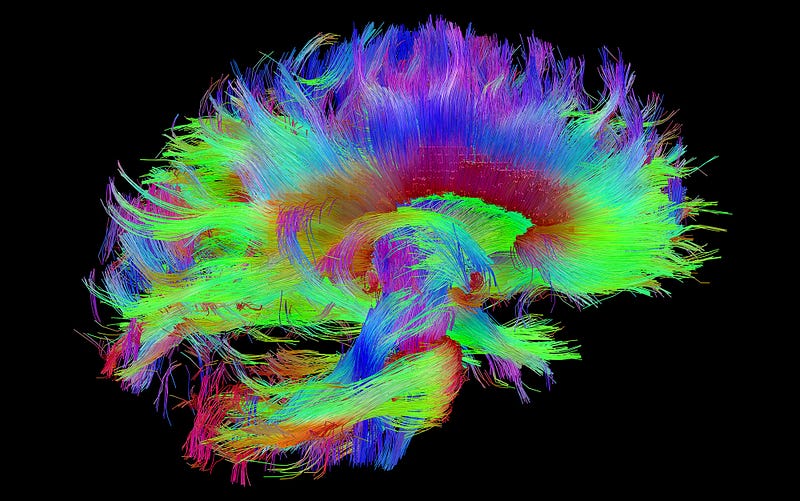Mapping the Intricacies of the Brain's Memory Network
Written on
Chapter 1: Unveiling the Brain's Memory Connections
Recent research has unveiled an intricate ‘wiring diagram’ of the human brain that illustrates the communication pathways between the hippocampus, the center for memory, and other regions of the brain. This comprehensive mapping may alter our understanding of memory itself.
Dr. Marshall Dalton, a research fellow at the University of Sydney's School of Psychology, noted, "We were taken aback to discover fewer links between the hippocampus and the frontal lobes, while observing an increase in connections with early visual processing areas." This discovery aligns with the hippocampus's dual role in not only memory but also imagination and mental imagery.
The hippocampus, resembling a seahorse in shape, is situated deep within the brain and is crucial for converting short-term memories into long-term ones. Its functions extend to navigation, visual perception, and decision-making, as well as the construction of mental images.

Chapter 2: Methodology of Mapping the Hippocampus
To create their detailed map, the research team, which included Dr. Arkiev D’Souza, Dr. Jinglei Lv, and Professor Fernando Calamante, utilized MRI scans from the Human Connectome Project (HCP), a major neuroimaging initiative led by the U.S. National Institutes of Health. They employed innovative techniques to analyze existing HCP data, enabling them to trace connections from various brain areas to their endpoints in the hippocampus—an unprecedented achievement in human neuroscience.
Dalton explained, "Our approach allowed us to examine the white matter pathways, which act as communication highways in the brain, in remarkable detail. We now have a comprehensive map of how the hippocampus interacts with the brain's outer layer, known as the cortical mantle."
This video explores the most detailed map of the human brain ever created, highlighting significant findings and implications for our understanding of memory.
The culmination of their research produced a "highly detailed map of white matter pathways linking the hippocampus to other brain regions," which serves as a crucial resource for understanding its role in memory formation.
Technical limitations in earlier MRI studies limited the visualization of the hippocampus's connections to broad strokes. However, this new methodology allows for precise identification of where different cortical areas connect within the hippocampus, a feat never achieved before in living humans.
Chapter 3: Insights and Implications
The team's findings largely corroborated data from previous studies conducted on primate brains post-mortem. However, some unexpected discrepancies emerged: the connections between the hippocampus and certain brain regions were either fewer than anticipated (particularly with the frontal areas) or greater than expected (notably with visual processing regions).
These variations could indicate that, while some pathways were preserved throughout evolution, humans may have developed unique connectivity patterns distinct from other primates. Further investigation is necessary to clarify these connections.
Dalton speculated, "These differences could stem from limitations in our MRI techniques or might genuinely reflect the structural realities of the human hippocampus, which could have fewer connections with frontal areas and stronger ties to visual regions. As our neocortex evolved, it is possible that these changes facilitated unique memory and visualization functions, possibly contributing to human creativity."
This video details the most comprehensive map of the brain ever created, offering insights that could reshape our understanding of cognitive processes.
The ongoing research highlights that while we have achieved high-resolution mapping of the human hippocampus, traditional tract tracing methods on non-human primates allow for more intricate exploration of connections at the cellular level.
The findings prompt further questions about the cognitive capabilities of humans compared to our primate relatives. For instance, studies from various years have indicated that chimpanzees often outperform humans in specific memory tasks, particularly those relying on short-term memory.
As research continues, we are left with an intriguing puzzle: what do these differences mean for our understanding of memory and cognition?
Like the story? Please hit the 💖 button below, or ‘follow’ at the top.